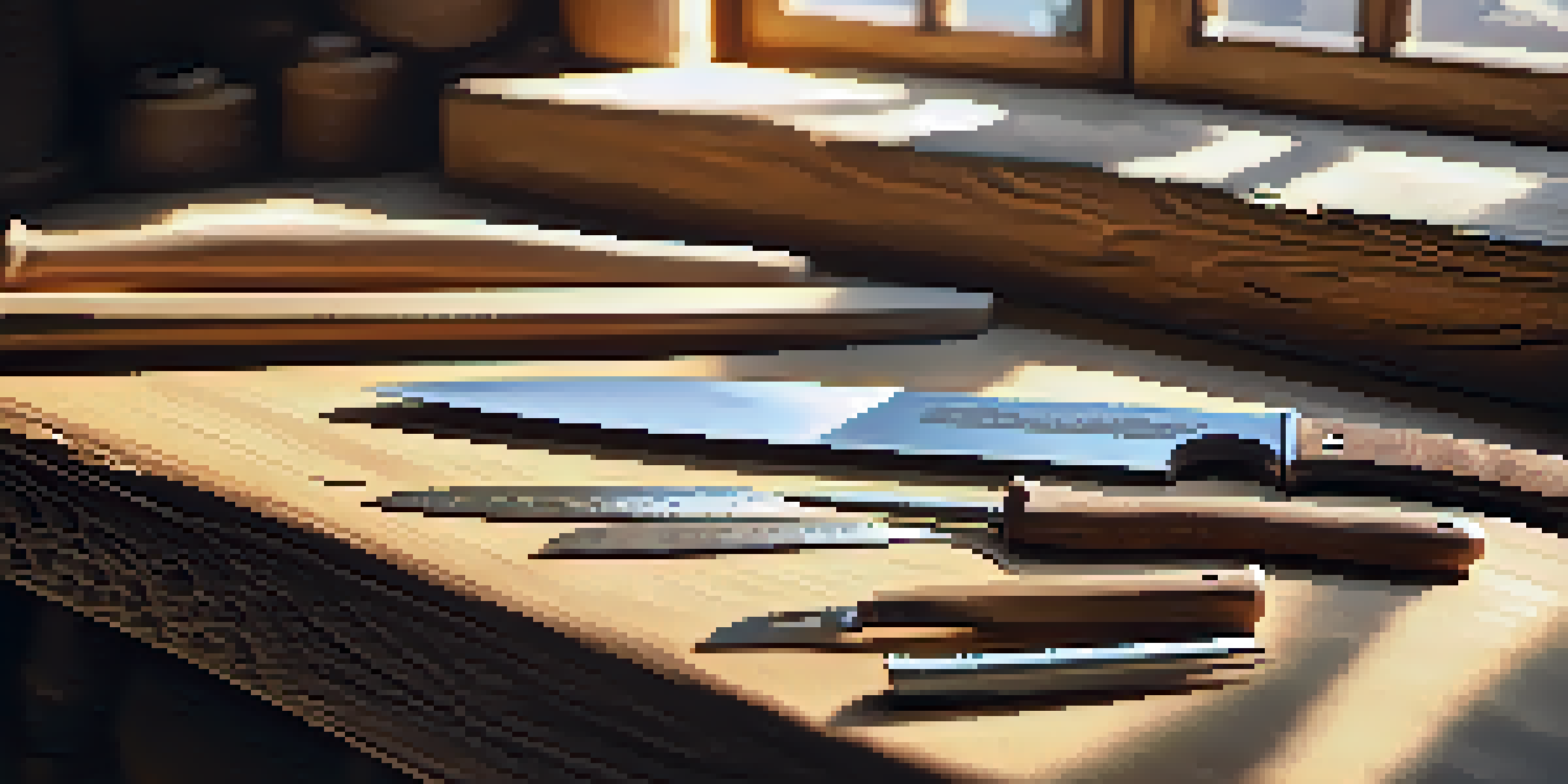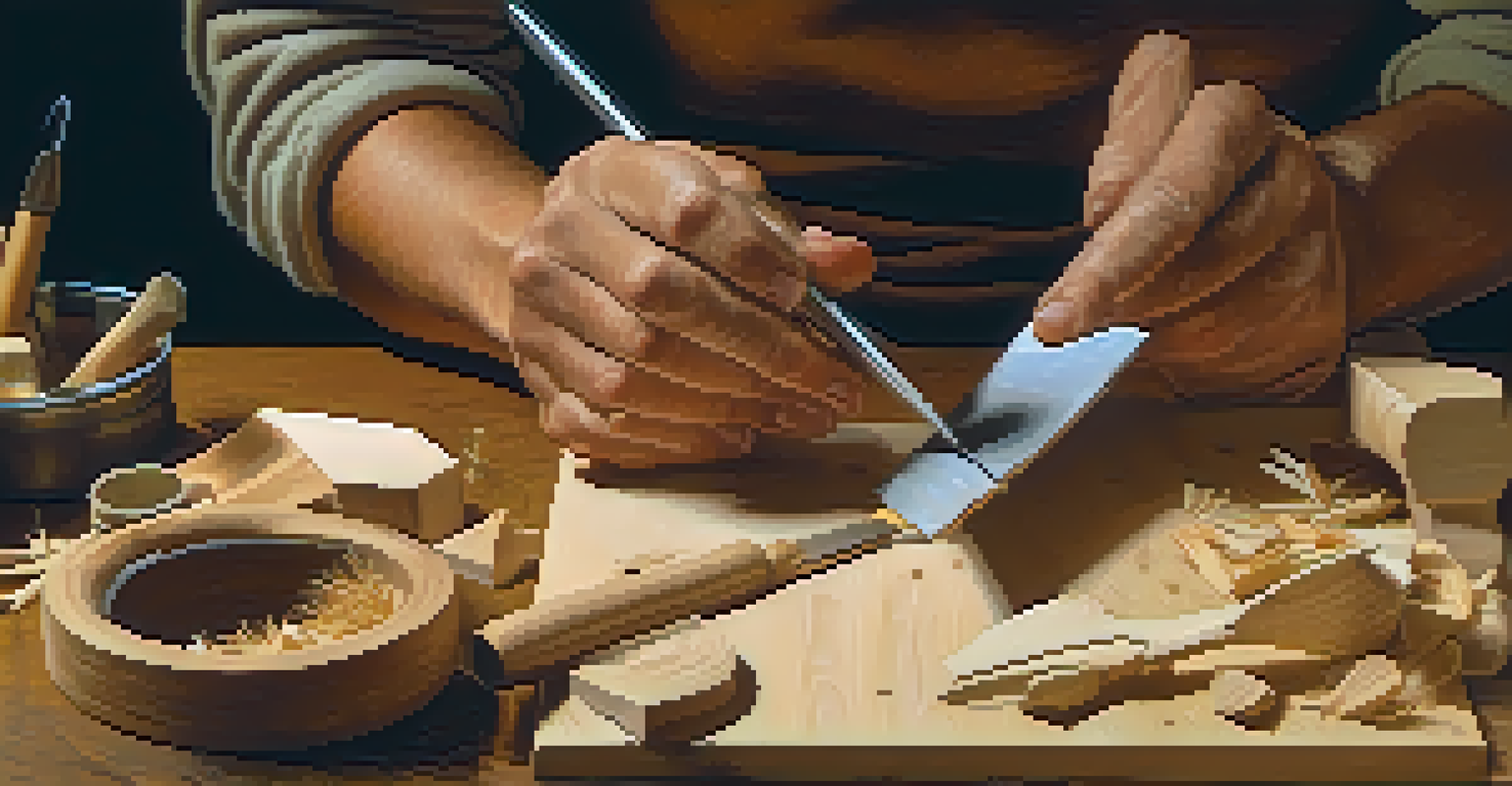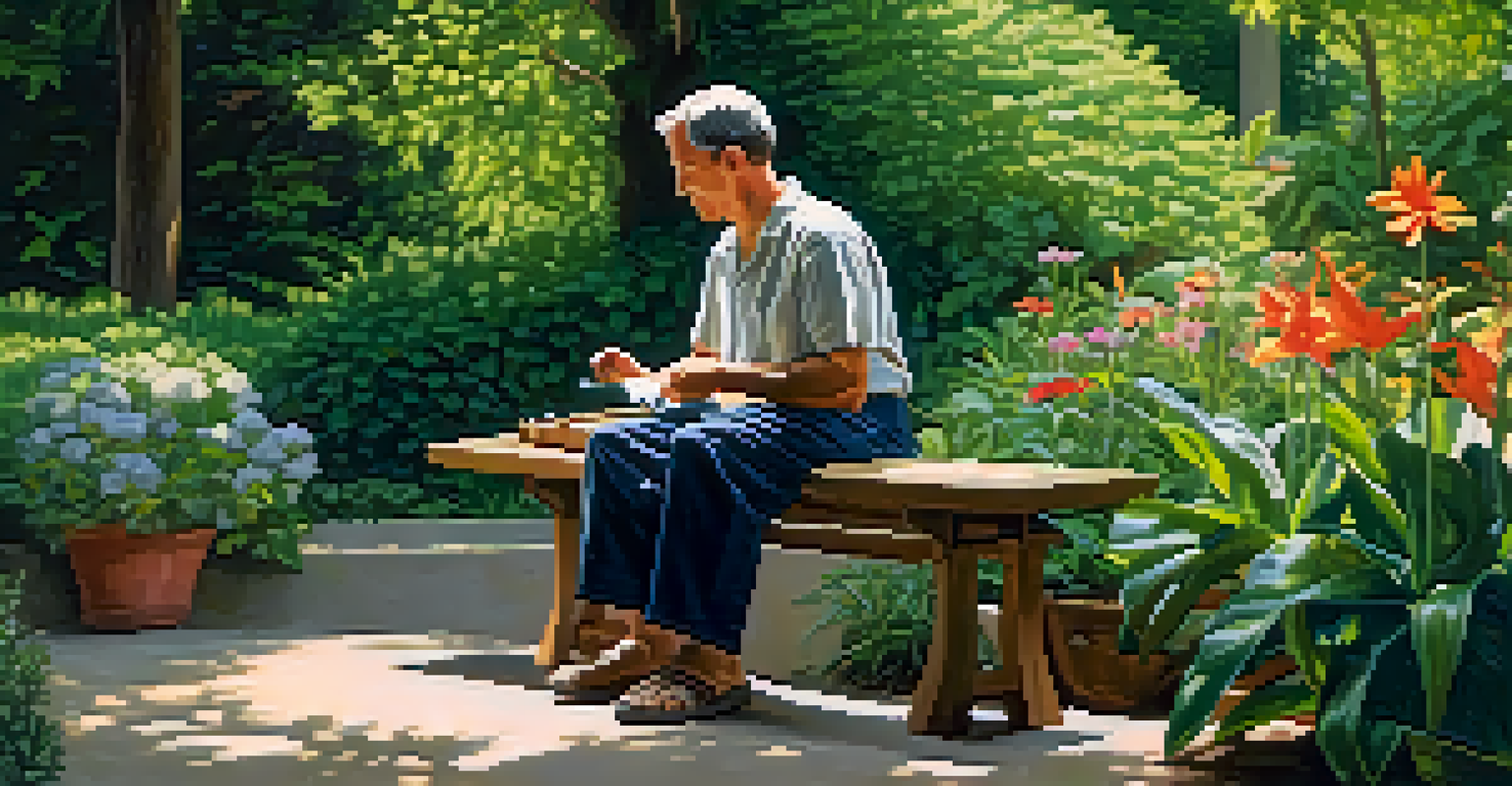Essential Tools for Beginners: Carving Made Easy and Fun

Understanding the Basics of Carving Tools
Carving is an art that requires the right tools to bring your ideas to life. For beginners, knowing the essential tools can make all the difference between frustration and fun. Think of carving tools as the paintbrushes of a painter; they are vital for achieving your desired results.
Every artist was first an amateur.
There are various types of carving tools, but you don’t need to buy them all at once. Starting with a few basic tools can help you get comfortable with the craft. As you progress, you can explore other specialized tools that suit your style and projects.
By understanding the basics of carving tools, you set a solid foundation for your carving journey. This knowledge not only boosts your confidence but also makes the learning process more enjoyable.
Essential Knives: The Heart of Your Carving Kit
Every carver needs a good set of knives, and they are often the heart of your carving toolkit. A whittling knife, for instance, is perfect for beginners because it’s versatile and easy to handle. This knife can help you create simple shapes and intricate details alike.

In addition to the whittling knife, consider investing in a detail knife for those more delicate tasks. These specialized knives allow you to carve finer lines and add intricate designs to your projects, making your work stand out.
Essential Tools for Carving Success
Understanding basic carving tools sets a solid foundation for beginners, making the learning process enjoyable and less frustrating.
Having a few reliable knives at your disposal means you're well-equipped to tackle a range of projects. It's like having a trusty set of cooking knives in the kitchen; the right tools can inspire creativity and confidence.
Safety First: Protecting Yourself While Carving
Safety should always be a priority when you're carving. Using sharp tools might seem intimidating, but with the right precautions, you can minimize the risk of injury. A carving glove can provide an extra layer of protection, so you can focus on your work without worry.
The only way to do great work is to love what you do.
Moreover, always carve away from your body and keep your hands behind the cutting edge. This simple rule can prevent accidental cuts and make the carving experience much safer. Remember, it's better to take your time than to rush and risk injury.
By establishing safe carving habits from the beginning, you create a more enjoyable and less stressful atmosphere. This focus on safety not only protects you but also enhances your overall creativity and enjoyment of the craft.
Choosing the Right Wood for Your Projects
The type of wood you choose can significantly impact your carving experience. Beginners often find basswood to be an excellent choice because it’s soft, easy to carve, and readily available. Think of it as the canvas for your artistic expression; the right wood makes your job easier.
Other popular woods for carving include butternut and pine, each offering different textures and challenges. By experimenting with various woods, you can discover which one feels best to you and suits your carving style. Each type of wood can bring a different character to your finished piece.
Safety Practices While Carving
Prioritizing safety by using gloves and carving away from your body helps prevent injuries and enhances the overall carving experience.
Ultimately, selecting the right wood is about finding what resonates with you as a carver. This exploration will not only improve your skills but also deepen your connection to the craft.
Basic Techniques Every Beginner Should Master
Before diving into complex projects, it's essential to master some basic carving techniques. Start with simple cuts, like stop cuts and relief cuts, which form the foundation for more intricate designs. Think of these techniques as the building blocks of your carving skills.
Practicing these basic techniques allows you to gain confidence and control over your tools. As you become more comfortable, you can gradually introduce more advanced techniques, such as undercutting and shaping. Each new skill learned opens up a world of creative possibilities.
By investing time in mastering these fundamental techniques, you pave the way for future success in your carving journey. It’s like learning to walk before you run; a solid foundation can lead to greater achievements.
Maintenance: Caring for Your Carving Tools
Just as a gardener tends to their tools, maintaining your carving tools is crucial for optimal performance. Regularly sharpening your knives not only makes carving easier but also enhances safety. A sharp tool requires less pressure, reducing the likelihood of slips and accidents.
In addition to sharpening, clean your tools after each use to prevent residue buildup. This simple practice can extend the life of your tools and ensure they remain effective. Treat your tools well, and they'll reward you with better results.
Choosing the Right Wood Matters
Selecting suitable wood, like basswood, can greatly impact your carving journey, affecting both ease of use and the final outcome of your projects.
Establishing a maintenance routine for your carving tools not only keeps them in top shape but also fosters a sense of pride in your craft. It’s all about respecting the tools that help you create your art.
Finding Inspiration and Community in Carving
Inspiration can be found everywhere, from nature to art galleries, and it’s vital for any beginner carver. Joining a carving community, whether online or in-person, can also provide a wealth of ideas and support. Sharing your work and learning from others can reignite your passion for the craft.
Social media platforms and carving forums are great places to connect with fellow enthusiasts. You can ask questions, share your progress, and even participate in challenges that motivate you to improve. Remember, you’re not alone in this journey; there are countless others who share your passion.

By immersing yourself in a community of carvers, you’ll discover a network of support and inspiration. This connection can be incredibly rewarding, making your carving experience even more enjoyable and fulfilling.